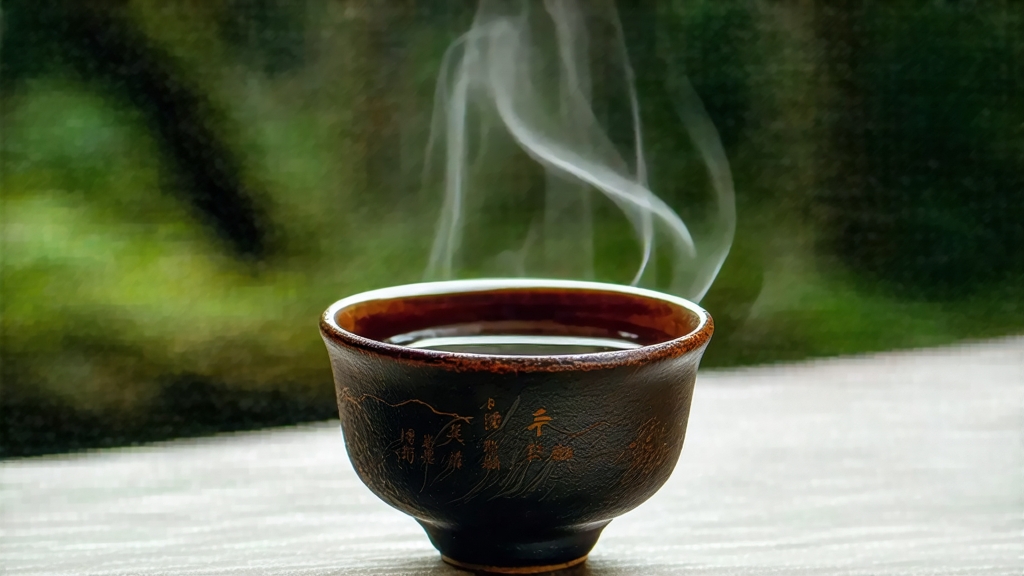
If green tea is the fresh watercolor of Chinese leaf craft and pu-erh the slow-aged oil painting, then Phoenix Dancong (Fenghuang Dancong) is the perfumed symphony of the oolong world—an endlessly layered composition of mountain air, flower nectar, charred wood and honey that changes its melody with every steeping. Nestled in the granite spine of Phoenix Mountain (Fenghuang Shan) in northern Guangdong, this remarkable oolong has been seducing merchants, monks and emperors since the Song dynasty, yet it remains one of the least understood treasures outside China. This essay invites the international tea traveler to listen closely to that symphony: its historical overture, botanical soloists, artisanal orchestration, and the delicate choreography required to brew and taste it properly.
-
A mountain that sings: historical roots
Phoenix Mountain rises abruptly from the subtropical lowlands of Chaozhou prefecture, its peaks catching monsoon clouds that shed 2,000 mm of rain each year onto acidic, mineral-rich granite soils. Local chronicles credit the She ethnic minority with first picking wild tea here during the Southern Song (1127-1279). By the Ming, tribute logs record “Phoenix bird-beak tea” being carted north to the imperial court; the name referred to the sharp, beak-like tip of the local large-leaf cultivar. When oolong technology—partial oxidation and charcoal baking—drifted south from Fujian’s Wuyi in the early Qing, mountain villagers adopted it, discovering that the same techniques that tamed Wuyi’s rock rhyme could amplify Phoenix Mountain’s natural florality. The term Dancong, literally “single bush,” appeared in gazetteers of the Qianlong reign (1736-1795) to distinguish garden plots where individual old trees, each with its own aroma signature, were isolated and harvested separately. Thus Phoenix Dancong was born: not a single recipe but a mosaic of micro-lots, each tree a cultivar in itself, each slope a separate estate. -
Botanical soloists: the fragrance families
Government agricultural surveys now list more than 80 genetically distinct Dancong strains, but exporters usually group them into ten “aroma types” (xiang xing) that echo the perfumes of familiar flowers or fruits. The four most celebrated are:
• Huangzhi Xiang (“gardenia fragrance”) – pale liquor, creamy mouthfeel, top note of white gardenia with a faint sweet-corn aftertaste.
• Xingren Xiang (“almond fragrance”) – stronger roasting, marzipan nose, round chestnut sweetness, lingering peach-skin astringency.
• Milan Xiang (“honeysuckle fragrance”) – medium oxidation, bright golden cup, front-note of wild honey, mid-palate of ripe melon, finish like sweet clover.
• Yashi Xiang (“duck-shit fragrance”) – the deliberately provocative name hides the most sought-after profile: orchid, lychee and warm cream, with a mineral snap the locals liken to “stone flower.” The story claims farmers coined the vulgar name to scare tea thieves; today it commands the highest auction prices in Chaozhou.
Each strain is grafted or air-layered from a venerable “mother tree” aged 200–600 years, then planted at elevations between 350 m and 1,050 m. Higher altitude slows leaf growth, thickens cell walls and concentrates aromatic precursors, so the most coveted Dancong grows in the mist belt above 700 m where diurnal swings can exceed 15 °C.
- The artisanal score: from leaf to leaf-ballet
Dancong production follows the Wuyi template—pick, sun-wither, indoor wither, bruise, oxidize, fix, roll, bake—but Phoenix masters insert micro-adjustments that exaggerate fragrance while preserving acidity.
a. Picking: only the terminal 2–3 leaves with the tender fish-leaf stem are plucked when the morning dew lifts. Standard is “half-open” leaf, when the serrated edge begins to curl but the mid-rib is still brittle.
b. Solar wither: leaves are spread on bamboo screens for 20–40 min of gentle February sun; UV light triggers glycoside hydrolysis, unlocking floral volatiles.
c. Room wither & dialogue: trays rest on racks 1.5 m above the ground while artisans